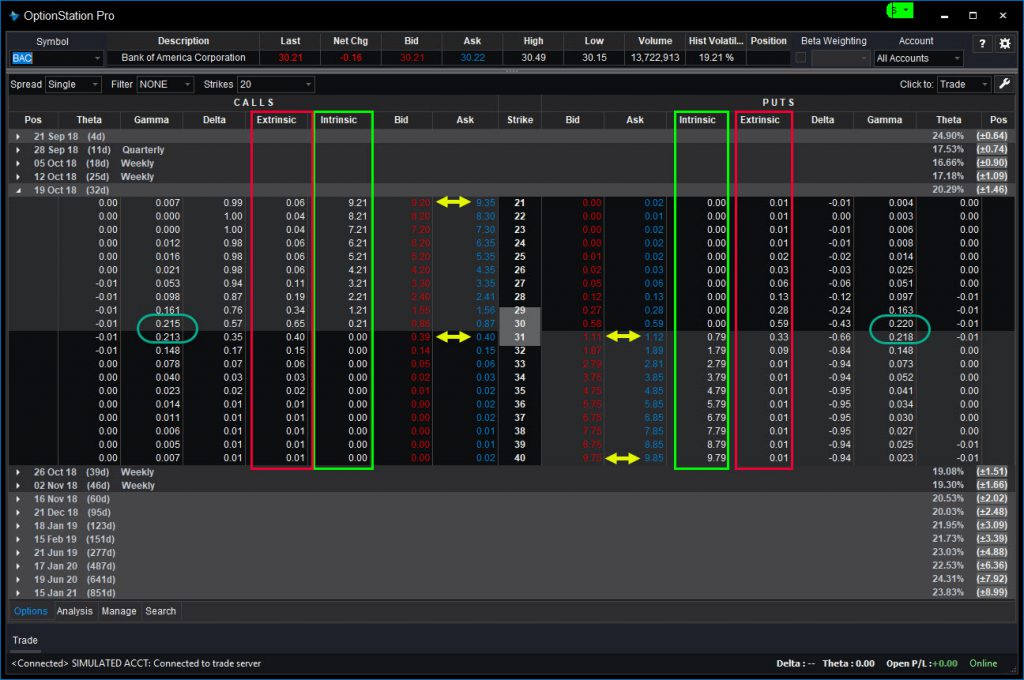One of the confusing things about options is, quite simply, all the options. Every underlier has dozens, if not hundreds or even thousands of related contracts. Where on earth to begin?
There are many ways to approach this question, so today we’ll consider options based on their strike price: “in the money” versus “out of the money.”
In simple terms, an option that’s in the money can be exercised. For puts, that means you can sell an underlier for more than its current price. Calls will let you buy under the current market value of the stock.
The fact they can be exercised mean they have intrinsic value. (In green on screen shot of OptionStation Pro below.) That’s in addition to their extrinsic, or time value (in red).

Some clients like in-the-money options because of this intrinsic value. “At least I’ll get something at expiration,” they tell themselves. While this is true if the underlier doesn’t move against you, it’s not always the best way to think about options.
After all, you’ll can see that in-the-money options tend to be much more expensive than out-of-the money contracts. This can result in two problems:
There’s less leverage. A higher cost basis means you’ll get lower returns on a percentage basis. (This is also discernible from the lower gamma.)
Secondly, options with higher premiums have wider bid/ask spreads, which are essentially transaction costs. This can also be problematic because if you’re right and the trade moves in your favor, the bid/ask spreads will widen against you as your position appreciates in value. In other words, the more money you make, the more it costs to take profits!
One final argument to consider against in-the-money options is that, despite having intrinsic value, they still have some extrinsic value. That means a holder still has risk of losing some value to time decay.
Our goal isn’t to bash in-the-money options. We just wanted to emphasize that they have some drawbacks that are often overlooked — especially when it comes to pricing and leverage. However there still plenty of times when they can be terrific instruments.
The main benefit of “going in the money” is that you capture of ton of delta, or pure directional exposure. It’s kind of like cutting the bottom off a stock and just riding those few dollars where the movement happens. That obviously results in a lot more leverage than owning the common shares.
When you combine that kind of leverage with highly liquid underliers like SPDR S&P 500 ETF (SPY) or Apple (AAPL), bid ask spreads will be tighter.
Another potential technique is to use in-the-money calls and puts on cheaper underliers like Ford Motor (F) and Bank of America (BAC). Their lower stock price will let you own contracts with lower premiums. That, in turn, will help you avoid the wider bid/ask spreads that often occur with higher-priced options.
In conclusion, in-the-money options have both pros and cons. The positives include less time decay and more delta. The negatives include wider bid/ask spreads and lower gamma. Hopefully this post will help you select the right options in your own trading.






















